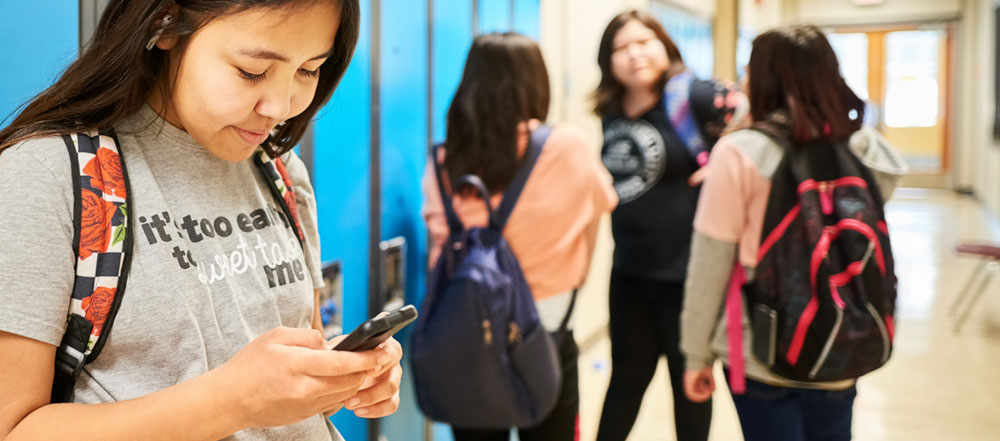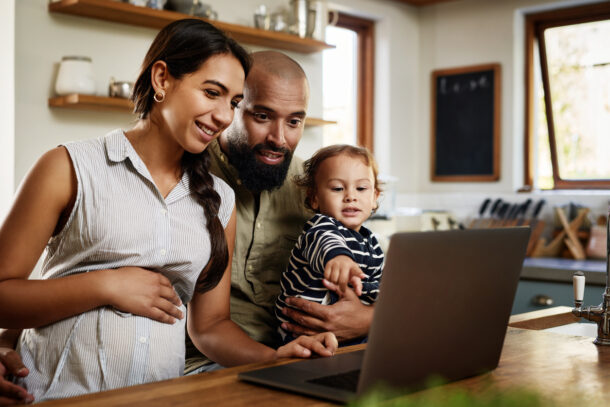Healthy guidelines for social media
It’s time to set a New Year’s resolution on something that’s probably been nagging at you for a while—the uptick of your tween’s or teen’s social media use. It’s on the rise among all kids ages 12 and up, and chances are that includes your son or daughter. Over 60 percent of U.S. teenagers spend four or more hours a day on social media, according to Common Sense Media. While some experts, and certainly many teens, argue that social media is a positive force in their lives, more studies than not show it can negatively affect your child’s grades, relationships, sleep and mental health.
“Our kids live in a world of extreme overstimulation due to the internet and social media. The fix, of course, is a limited amount of screen time,” says Tom Kowalski, MA, LPC, a licensed professional counselor in Fort Collins.
Make it a goal to increase your awareness around social media use and teens, and consider some healthy guidelines. Here are some ideas on where to start.
Be aware of social media’s dark side
Even as an adult, it’s hard not to compare ourselves to others, think that we don’t have enough friends, or that our life is boring when we read other people’s social media posts. Imagine what it’s like to engage in social media as a 12 or 14 year old who lives and dies by how others perceive them.
We’ve all seen the news stories and documentaries on the negative affects social media has on our kids. Just this past fall, according to leaked internal research at Facebook, its Instagram app heightens body image issues for preteen and teen girls. The Wall Street Journal uncovered company reports that found Instagram “makes body issues worse for one in three teen girls.” Other reports stated how teens said Instagram made their anxiety or depression worse.
Additional studies mirror what the insiders at Instagram uncovered. For example, a study of 1,700 people found the more individuals used social media, the more they felt depressed or anxious. Those who used it the most reported three times the rate of these negative feelings than those who used it the least. People named a few reasons for this downturn—guilt about wasting time, cyber-bullying, and distorted beliefs about other people’s lives. In particular, another study named viewing selfies as a trigger for feeling bad about yourself, because most selfies show smiling, happy people.
Know which sites are safe and which are not
Our incredible connectivity has some major advantages, like helping your teen write a research paper, or staying in touch with long-distance family and friends. But it also invites strangers into your home, probably in ways you don’t even realize. A classic example is a stranger chatting with your child in an online game and befriending them. Also, are you aware that there are viral social media challenges that taunt your child to do dangerous things? Two scary ones emerged in 2021. The first challenges kids to take large amounts of Benadryl and record the effects that it has, including hallucinations. The second, on Tok-tok, encourages kids to destroy their school’s restrooms.
“There’s a social bonding that happens with preteens and teens. They can develop an “us against the world” way of thinking. Throw in an underdeveloped prefrontal cortex, along with the normal developmental need to rebel, and problems can become probable,” Kowalski adds.
Take inventory of your child’s moods after social media use
It’s important to keep in mind that social media is still relatively new, and studies are not conclusive. Yet, it’s good to be aware of what could be happening with your kids. Do your own sleuthing. Are they grumpy or mopey after spending time on their social media accounts? Or does it give them energy? Let your child’s reactions be a part of your decision when setting social media limits. Also, start an open conversation about how social media makes them feel, what they like about it, and what they don’t.
“Help your kids develop a rich vocabulary to talk about their feelings and inner experiences,” Kowalski concludes.
5 ways to limit social media use
To lessen the negative effects of social media on your child, set some rules about when, where and how they can access it—and start early before the teenage years for best results. Here are some rules to consider.
1. If your child wants to download an app, they have to ask you first
Before saying yes, do your research to learn whether or not the site is safe. There are a lot of helpful websites that can serve as guides. A site for parents and educators called smartsocial.com helps you keep your child safe. It’s full of ideas, like being on every app your child is on so you understand how they work. It also breaks apps down into green, gray and red zones, so you get a high level view of what’s safe and what’s not. For example, green zone apps are often associated with positive interactions that don’t promote private sharing, such as Facebook with privacy settings for teens ages 12+. Gray zone apps are a bit dangerous, allowing for content that is hidden from parents and some opportunities for cyberbullying. The site puts Minecraft and Google chat in this category, among others. Red zone apps encourage inappropriate behavior and include Wink App, Call of Duty, Reddit, and others.
“To fit in, kids emulate the cool behavior they see around them, including what they see on social media and in the entertainment world,” Kowalski says.
2. Limit the number of their social media accounts
Studies show that the more social media accounts a child or teen has, the more likely they will experience negative effects. Allow them to download one or two favorite apps, but no more. This is especially important if they are struggling socially and if they are getting bullied at school. A recent scientific survey of 2000 middle schoolers found that kids who had been victims of cyberbullying were twice as likely to attempt suicide than their counterparts.
3. Ban phones, tablets, and gaming devices from bedrooms
This does two things, it encourages media use in public areas where you can casually monitor what they are viewing, and it also helps them sleep better. If unchecked, kids will text and play well into the night. While you are at it, end all media use at least an hour before bedtime to encourage better sleep.
4. Set parental controls, especially for children and preteens
While parental controls won’t keep your child from never being exposed to inappropriate content, it does help. Check out the popular Net Nanny and Kaspersky Safe Kids, but there are a lot of choices out there. Many phones and tablets come with built-in parental controls. For young kids you can block access on tablets and phones by simply turning on airplane mode.
5. Limit time spent on social media
Over half of kids in the U.S. have a smartphone by the age of 12. With that said, hold out as long as you can to get your child a phone. Time on their phones and social media is time away from their studies, spending real time with family and friends, or doing something positive like getting outside, exercising and playing a sport. Allow social media during natural downtimes, like waiting in lines, commutes from school or practice, immediately after school for some relaxation, and after homework is completed. Decide time limits that work for your family, for example one hour a day on weekdays, two hours on weekends. Finally, have your child set alarms on their apps, which alert them to when their allotted time is up.

Lynn U Nichols is a longtime Fort Collins-based freelance writer who specializes in health and wellness content. She raised two boys while writing for RM Parent Magazine, gratefully applying the wisdom she gleaned from interviews with child experts along the way. Learn more at healthwritecommunications.com.




